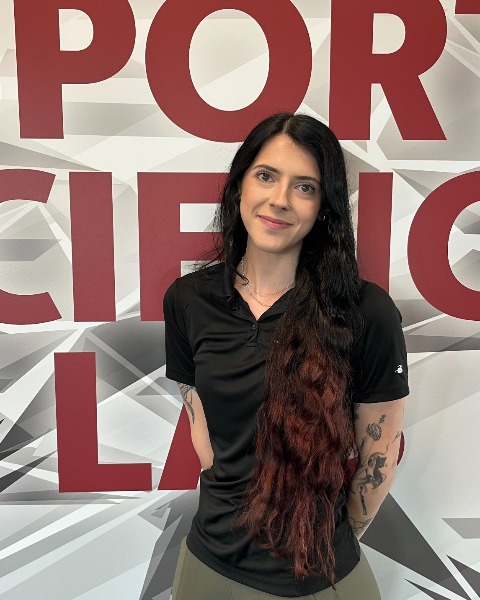Nutrition/Ergogenic Aids
(25) DIFFERENCES IN MEASURED AND ESTIMATED ENERGY EXPENDITURE DURING ON-HORSE TRAINING IN COLLEGIATE DIVISION I EQUESTRIAN ATHLETES


Mackenzie B. Yoder, CSCS
Graduate Student
University of South Carolina
Lexington, South Carolina, United States- AC
Alexa J. Chandler
Doctoral Student
University of South Carolina
Columbia, South Carolina, United States 
Sten O. Stray-Gundersen, PhD
Research Fellow
University of South Carolina - Sport Science Lab
Columbia, South Carolina, United States
Gianna F. Mastrofini, MS
Doctoral Student
University of South Carolina
Cayce, South Carolina, United States
Blaine S. Lints, MS, CSCS,*D
Doctoral Student
University of South Carolina
York, South Carolina, United States
Harry P. Cintineo, PhD
Assistant Professor
Lindenwood University
Saint Charles, Missouri, United States- SA
Shawn M. Arent
Department Chair of Exercise Science
University of South Carolina
Columbia, South Carolina, United States
Poster Presenter(s)
Author(s)
Background: Assessing energy expenditure (EE) during exercise and training provides information for practitioners who provide nutritional advice to athletes. Unfortunately, direct EE measures, such as indirect calorimetry, require expensive and obtrusive equipment and are often not feasible for daily wear or competition. Heart rate (HR) monitors provide a cost-effective, noninvasive, widely accessible method to estimate EE in field-based settings. Further, there is minimal research regarding EE during equestrian events, therefore limiting fueling recommendations for these athletes.
Purpose: To assess agreement between measured and estimated EE (kilocalories [kcals]) during on-horse training sessions in collegiate equestrian riders.
Methods: Female NCAA Division I equestrian athletes (n=11; Mweight = 66.1 ± 7.1 kg) participated in this study. EE was measured via oxygen consumption using a wearable metabolic system (K5, COSMED, Concord, California, USA) and estimated via HR (Polar Team Pro, Kempele, Finland) during a ~30 minutes on-horse training session consisting of various drills and demands. Descriptive data are displayed as M ± SD. One-way ANOVAs were conducted to assess differences between measured and estimated EE. Pearson’s correlations (r) with 95% confidence intervals (CI) were conducted to assess the relationship between measured and estimated EE, while intraclass correlation coefficients (ICC) with 95% CIs were used to evaluate the agreement between devices (a=0.05). Bland-Altman analyses were used to assess mean differences and limits of agreement (LOA) between measured and estimated results.
Results: Estimated EE was significantly higher than measured EE (Estimated = 211 ± 86 kcals; Measured = 150 ± 75 kcals; P=0.0002). There was a strong correlation (r = 0.91 [0.68-0.98]; P=0.0001) and strong agreement (ICC = 0.90 [0.67-0.97]; P< 0.0001) between measured and estimated EE. The mean difference between estimated and measured EE was 61.2 kcals with LOA of -9.7 to 132.1 kcals (see Figure 1).
Conclusions: HR-derived metrics overestimated EE by 40.7% compared to oxygen consumption via indirect calorimetry. The discrepancy between HR-estimated and measured EE could be due to an increased HR from a catecholamine response elicited from the nature of riding and potential anaerobic contributions. Moreover, a psychological factor may be involved due to the randomized pairing of horse and athlete during training sessions increasing HR but not influencing oxygen consumption. However, the strong correlations between the two devices indicate the overestimation is consistent, and therefore, HR-derived estimates can serve as a reliable tool to assess EE. Additionally, this analysis shows athletes expended approximately five kcals/min, or 300 kcals/hr, during on-horse training sessions. Future research should investigate how different horse gaits and drills impact rider EE.
PRACTICAL APPLICATIONS: HR-derived EE appears to be a reliable proxy for EE during on-horse training sessions. However, nutritional staff must adjust fuel recommendations to account for the consistent overestimation in EE compared to direct measurements.
Acknowledgements: ACKNOWLEDGEMENTS: This abstract was made possible in part by Grant Number T32-GM081740 from NIH-NIGMS. Its contents are solely the responsibility of the authors and do not necessarily represent the official views of the NIGMS or NIH.
